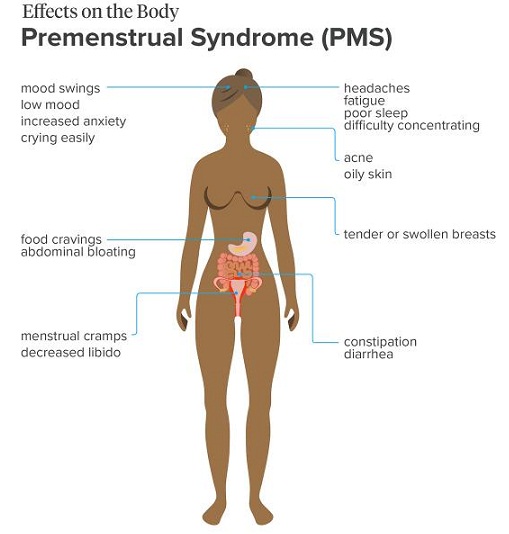Do you experience Cramps, bloating, headaches, or bad moods just before the time you’re going to get your cycles? If yes, then you are on the struggling side. Girls who experience one or more of these issues must be well versed with something called Premenstrual syndrome, popularly known as PMS. According to research, half of the women around the world of reproductive age experience PMS. To some, the symptoms are simply nuisance while for others they become a hindrance in daily life chores. It can be managed by getting familiar with your own cycle and learning the factors that can make your symptoms better or worse.
Let’s Understand What PMS actually is?
PMS indicates a group of symptoms that usually make an appearance about a week before your period. Typically, they begin soon after ovulation and lasts before menstruation. The exact reason for PMS is not known, but according to some experts, it could be due to a dramatic fall of estrogen and progesterone levels between ovulation and menstruation. The symptoms usually vanish off a few days after the cycle begins as hormone levels begin to rise again at this time.
Kate White, assistant professor of obstetrics and gynecology at Boston University says, “Abrupt changes in any hormones—not just estrogen and progesterone—can affect somewhere in the body. If your thyroid hormone plummets or skyrockets, for example, it affects. Hormones are the signal conductors that make the subways run and they keep everything humming along the way it’s supposed to. If there’s a drastic change in any of them it can have downstream effects.”
Another major reason is attributed to changes in brain chemistry. An inadequate amount of the brain chemical serotonin might cause an increase in the risk for depression, fatigue, sleep issues, and food cravings
Symptoms of PMS
Signs and symptoms of PMS differ from one woman to another. Some women experience physical symptoms, some experience emotional symptoms, some experience a mix of both, and some experience neither. You may face different symptoms during different stages of your life. These symptoms can become more intense or milder with time. It becomes more noticeable as the women reach their late 30s or 40s because at that time transition to menopause begins.
Some of the most common physical symptoms include Tender or swollen breasts, Muscle or joint pain, Cramps, Constipation or diarrhea, Bloating, gassiness, or weight gain due to water retention, Fatigue, and clumsiness, Headache, Acne breakouts, Changes in appetite or food cravings
Some of the common emotional or mental symptoms include Irritability, Anxiety, Depression, Tension, Mood swings, Insomnia, Social withdrawal, Trouble focusing on things, etc.

So, if you are getting any of the above symptoms just a few days before your period (for at least three menstrual cycles in a row), you can consider yourself to be a part of the PMS club.
How Can You Manage PMS symptoms?
Simple changes in the lifestyle may bring relief, so don’t worry. Few things which can help are as follows:
- Indulging in Cardio like running, dancing, cycling, etc. can help with symptoms like depression, fatigue, and an inability to concentrate.
- Reducing the consumption of sugar, salt, caffeine, dairy, and alcohol may prove to help ease out symptoms like bloating and fluid retention.
- Increasing the number of healthy carbs like oats, wholegrain bread, etc. may lift your mood.
- Maintaining proper sleep hygiene may cause fewer mood swings, less fatigue, and clumsiness.
- Cutting down on alcohol and smoking can help too.
The symptoms of PMS ease out within four days after your period starts but they prevent you from performing or enjoying your regular activities. So, you can try out the above-mentioned ways to bring some peace to your life.



